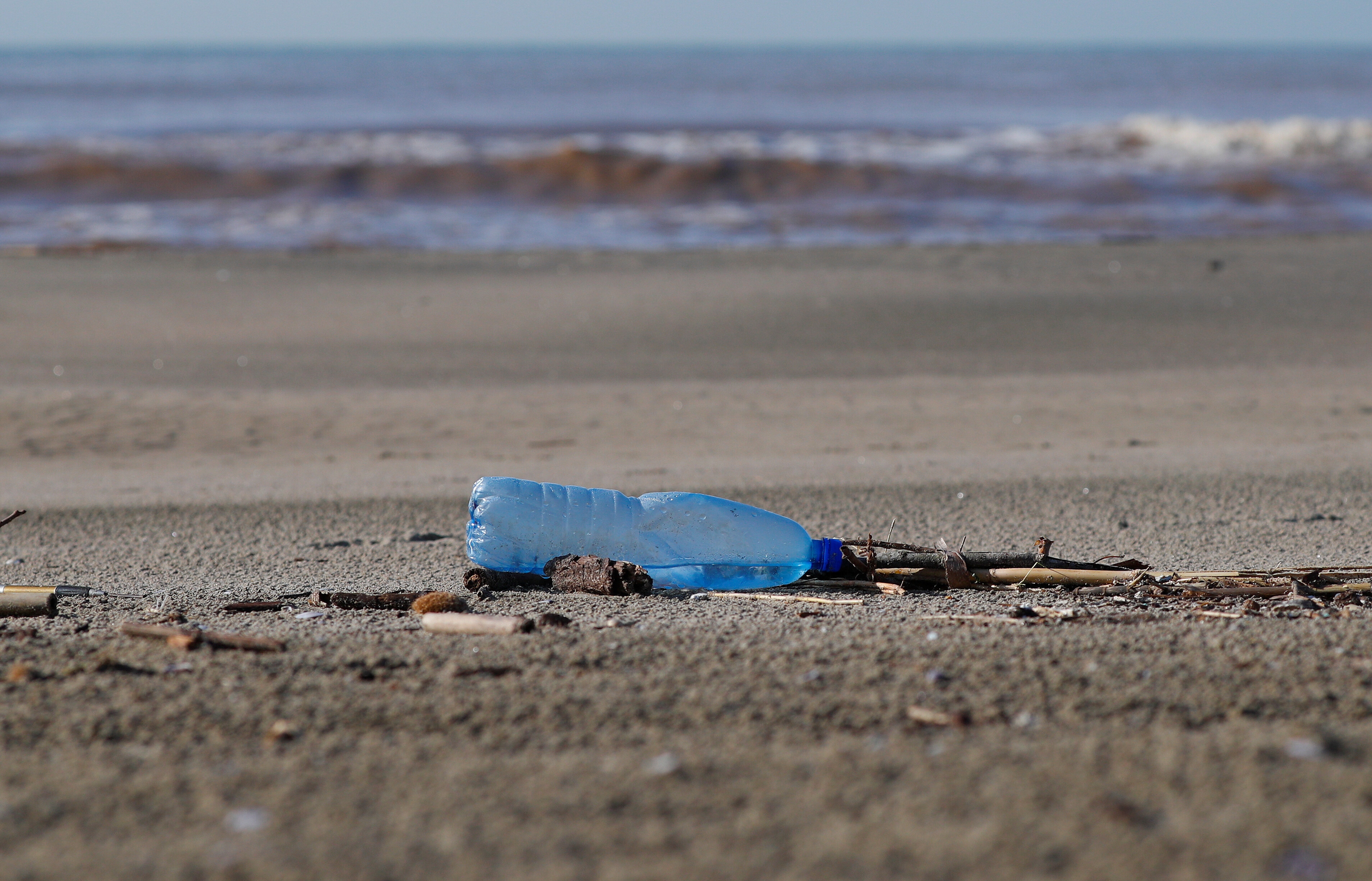Can covering glaciers with protective shields reduce melting?
Resort staff have been working over the summer months to limit the impact of warming.
Image: REUTERS/Arnd Wiegmann
Stay up to date:
Switzerland
- A glacier on Mount Titlis, Switzerland, has lost large amounts of ice over recent decades.
- This summer, skiing resort staff in this area have responded by laying a fleece over the surface to shield it.
- Employees now routinely cover approximately the size of fourteen football fields with this protective fleece.
- In spite of these efforts, 90% of its remaining 1,500 glaciers will be gone by the end of the century if greenhouse gas emissions are not cut, according to the Swiss government.
In one of Switzerland's most popular Alpine destinations, resort staff have been working over the summer months to limit the impact of warming global temperatures on its glacial slopes - by blanketing the ice to block the sun.
The 3,238-metre (10,623-ft) Mount Titlis has seen large swathes of ice disappear from its glacier over recent decades. Within the next half century, all of it is expected to melt.
"We lay the fleece over the glacier like a natural protective shield," Gian Darms, who manages snow conditions and piste security for cable car operator Titlis Bergbahnen, told Reuters.
Declining snow cover as a result of climate change poses an existential threat to ski resorts throughout Europe. A glacier can provide some protection, preserving piles of snow year-round that can even be deployed on barer ski pistes elsewhere on the slopes.
But the Swiss government has said 90% of its remaining 1,500 glaciers will be gone by the end of the century if nothing is done to cut greenhouse gas emissions.
Darms said Titlis Bergbahnen has had to continually increase the size of the cover it lays on the glacier in recent years to preserve what is left.
A handful of employees work over five-to-six weeks to cover parts of the glacier with a protective polyester fleecing, which helps stave off summer melting and preserve more of the snow that fell in the previous winter.
They now cover some 100,000 square metres, or roughly the size of fourteen football fields, with the reflective fleece, which helps radiate the sun's energy back into the atmosphere, before spending weeks peeling it back off again.
What’s the World Economic Forum doing about climate change?
Collected snow is then used to help fill glacial cracks that otherwise might open on the resort's ski pistes, while also helping to keep in place the lift supports that are fixed into the ice.
Don't miss any update on this topic
Create a free account and access your personalized content collection with our latest publications and analyses.
License and Republishing
World Economic Forum articles may be republished in accordance with the Creative Commons Attribution-NonCommercial-NoDerivatives 4.0 International Public License, and in accordance with our Terms of Use.
The views expressed in this article are those of the author alone and not the World Economic Forum.
Related topics:
Forum Stories newsletter
Bringing you weekly curated insights and analysis on the global issues that matter.
More on Climate ActionSee all
Hu Xiangdong and Felipe Carazo
August 1, 2025
Kate Whiting
July 31, 2025
Florian Krampe
July 31, 2025
Andrea Willige
July 30, 2025
Tom Crowfoot
July 30, 2025




